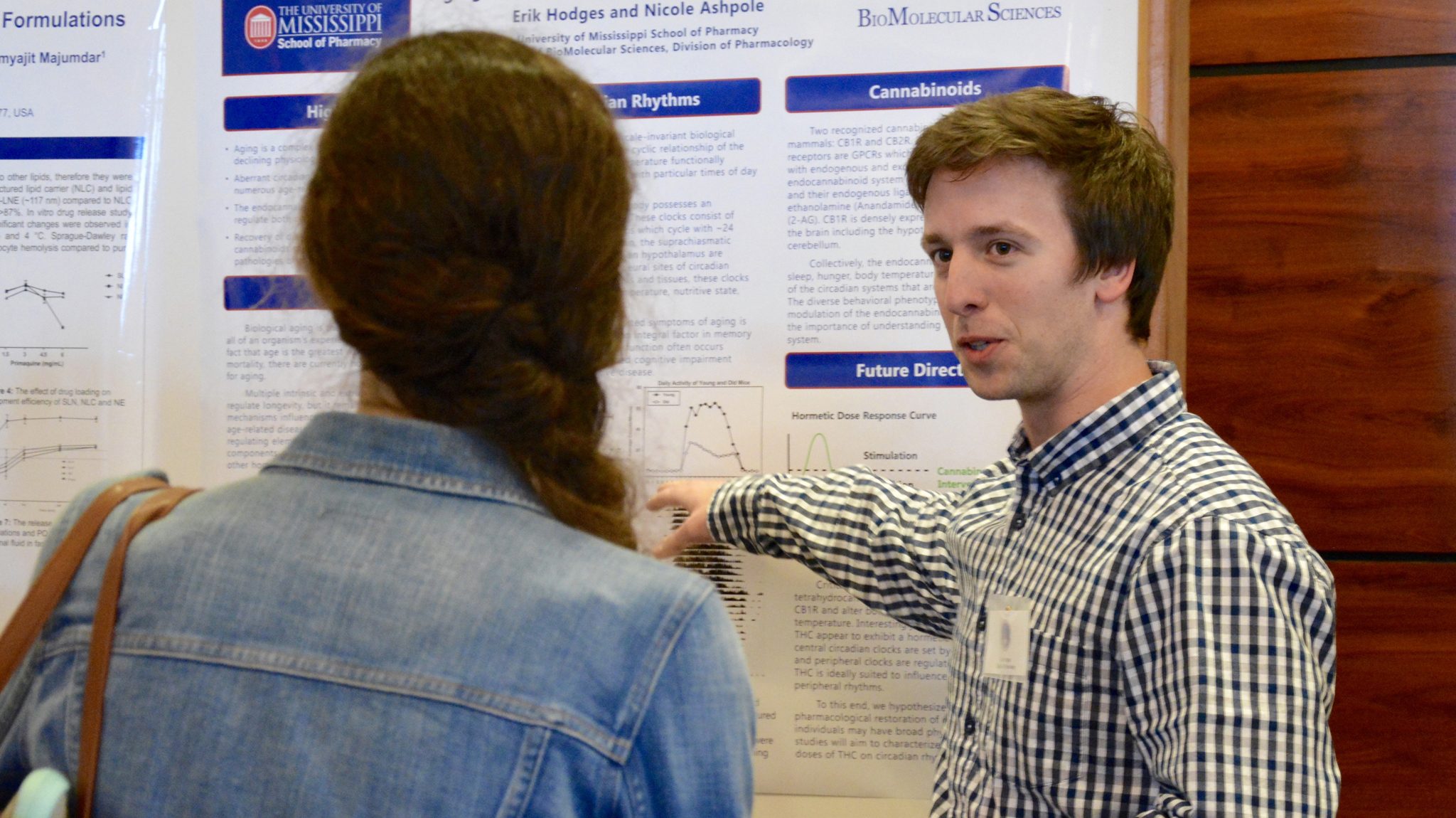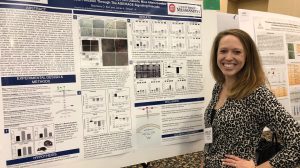
UM pharmacy graduate student Erik Holdes explains his latest work on brain function at university’s recent Neuroscience Showcase. Photo by Whitney Tarpy/School of Pharmacy
OXFORD, Miss. – Several graduate students in the Department of BioMolecular Sciences within the University of Mississippi School of Pharmacy earned awards for their presentations at the recent UM Neuroscience Research Showcase and the Mississippi Academy of Sciences Annual Meeting.
Erik Hodges, a graduate student from Norman, Oklahoma, was honored at the Neuroscience Showcase in April. Student award winners at the MAS meeting were Stephanie Burr, of Eden Prairie, Minnesota; Amelia Clayshulte, of Las Cruces, New Mexico; Mallory Harmon, of Meridian; and Alaa Qrareya, of Palestine.
Hodges was awarded for his outstanding graduate presentation at the university’s Neuroscience Showcase. Hodges works in the lab of Nicole Ashpole, assistant professor of pharmacology, where he researches how brain function and performance change as people age. His research specifically focuses on the effects of cannabinoids on circadian rhythms and the aging brain.
His ultimate goal is to better understand how aging influences the onset of disease by learning which aspects of aging can be slowed using therapeutics.
“I am thrilled that my work was recognized among the many talented researchers who presented at the showcase,” Hodges said. “Ole Miss is home to a substantial amount of neuroscience research, and it was great to see much of this work presented during the Brain Awareness Week events.”

Stephanie Burr shows off her research on the correlation between diabetes and cardiovascular disease at the recent Mississippi Academy of Sciences Annual Meeting. Submitted photo
Burr, a second-year Ph.D. student, focused on the correlation between diabetes and cardiovascular disease to gain a better understanding of how a specific cell signaling pathway contributes to diabetic heart failure. Burr credited the biomolecular sciences department’s resources and faculty for allowing her to further her research goals.
“The faculty in the department are more than willing to help provide guidance and share their knowledge,” Burr said. “Having a department made up of intelligent scientists with a large knowledge base has been extremely helpful in my growth as a researcher and has helped to further develop my project.”
Clayshulte placed third in the graduate student presentation for her research on how environment affects sponges. Harmon, a senior biology major who works in the lab of Jamie Stewart, associate professor of pharmacology, was third in the undergraduate portion, with her research on changes in cardiac fibroblast migration in diabetic conditions.
Qrareya finished second overall for her poster presentation. The pharmacology graduate student works in the lab of Jason Paris, assistant professor of pharmacology, investigating the neuroendocrine mechanisms that may cause females to be more vulnerable to opioid abuse.
The department also was well-represented at the MAS meeting. A large contingent of undergraduate and graduate students’ presentations highlighted the department’s work, along with a graduate recruiting booth.
Stewart serves as a faculty officer for the society, and Kristie Willett, biomolecular sciences chair and professor of pharmacology and environmental toxicology, was an invited speaker.